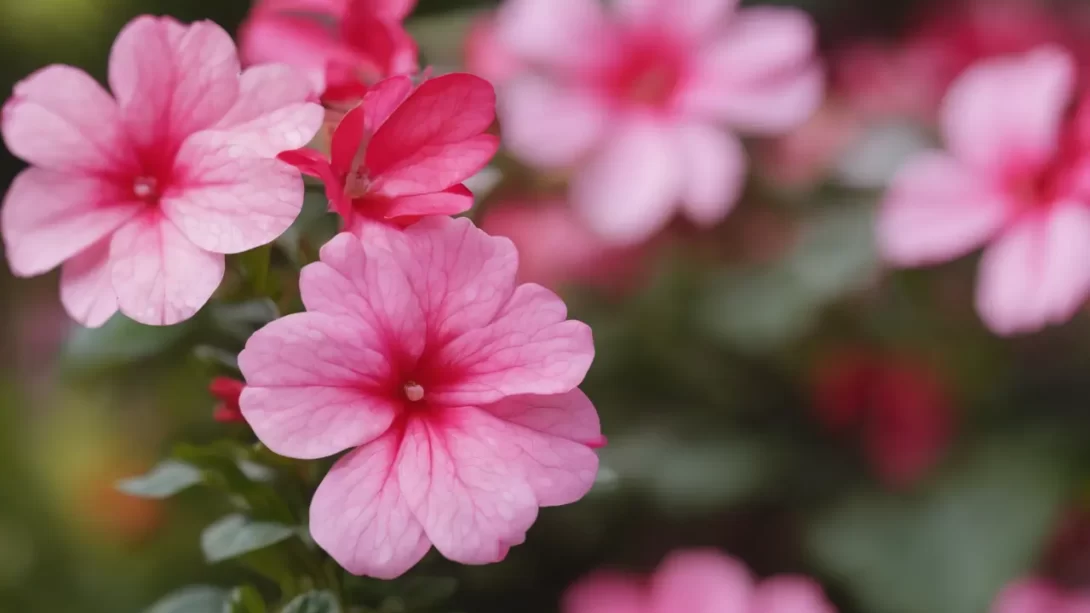SunPatiens have become a staple in many gardens, renowned for their vibrant colors and impressive resilience in various weather conditions. A common question among gardeners is whether these plants are perennials or annuals. This article aims to delve into the nature of SunPatiens, providing clarity on this question and offering insights for garden enthusiasts.
SunPatiens
SunPatiens are a hybrid variety of impatiens, developed for their robustness and ability to thrive in both sunny and shady conditions. They are known for their large, brightly colored flowers and substantial, bushy foliage. SunPatiens come in a range of colors including red, orange, pink, purple, and white, and are available in compact, spreading, and vigorous growth habits.
The breeding history of SunPatiens traces back to efforts to create a more sun-tolerant and disease-resistant variety of impatiens. These efforts have resulted in a plant that not only withstands direct sunlight but also resists common diseases that affect traditional impatiens, such as downy mildew.
The Nature of Perennial and Annual Plants
To understand the classification of SunPatiens, it’s important to first define what makes a plant a perennial or an annual. Perennials are plants that live for more than two years, typically flowering annually after their first growing season. In contrast, annual plants complete their life cycle – from germination to seed production – within a single growing season, after which they die.
In garden settings, perennials offer the advantage of returning year after year, while annuals are known for their longer blooming period within their one-year life cycle. The choice between perennials and annuals often depends on the gardener’s objectives and the climate of the garden.
Are SunPatiens Perennials?
The classification of SunPatiens as perennials or annuals largely depends on the climate and growing conditions. In general, SunPatiens are treated as annuals because they are not frost-tolerant. In regions where temperatures drop below freezing during winter, SunPatiens will not survive outdoors and must be replanted each year.
However, in warmer climates where frost is not a concern, SunPatiens can survive and behave like perennials, coming back for several years. It’s important to note, though, that even in these climates, SunPatiens may not live as long as traditional perennials due to their hybrid nature.
Climate and SunPatiens’ Lifespan
The climate plays a pivotal role in determining whether SunPatiens will behave as perennials or annuals. In regions with mild winters and no extreme frost, SunPatiens have the potential to survive year-round, acting as perennials. For instance, in USDA hardiness zones 10 and 11, where temperatures rarely drop below freezing, SunPatiens can often thrive throughout the year.
In contrast, in cooler climates with harsh winters, SunPatiens will not survive the cold months. In these areas, they are typically grown as annuals, planted in spring after the last frost and lasting until the first frost of fall. Gardeners in these zones might find it more practical to treat SunPatiens as seasonal plants, replacing them each year.
Caring for SunPatiens
Proper care is essential for the health and longevity of SunPatiens, regardless of their perennial or annual classification. These plants prefer well-draining soil and a location that receives a mix of sun and shade throughout the day. Regular watering is important, especially in hotter, drier climates, but overwatering should be avoided to prevent root rot.
Fertilizing SunPatiens every couple of weeks during the growing season can promote vigorous growth and abundant flowering. It’s also beneficial to periodically deadhead spent blooms to encourage new flowers to form. In terms of disease and pest resistance, SunPatiens are generally hardy but should still be monitored for common garden pests.
Maximizing the Lifespan of SunPatiens
For gardeners wishing to extend the lifespan of their SunPatiens, especially in cooler climates, there are several strategies to consider. In areas with mild winters, mulching around the plants can help protect the roots from light frosts. In regions with harsher winters, SunPatiens can be brought indoors before the first frost. They can be overwintered as potted plants in a sunny, warm location and then replanted outside once the danger of frost has passed.
Another method to enjoy SunPatiens year after year, even in colder regions, is propagation. Cuttings can be taken from healthy plants towards the end of the summer, rooted in water or soil, and grown indoors over the winter. These young plants can then be transplanted outdoors in the spring, ensuring a continuous display of SunPatiens in the garden.
Overwintering SunPatiens in Colder Climates
In colder climates, where SunPatiens cannot survive the winter outdoors, overwintering them indoors is a viable option. Before the first frost, dig up the healthiest plants and pot them in suitable containers. Place these pots in a well-lit area inside your home, ensuring they receive enough sunlight. Regular watering and a slight reduction in fertilization will help maintain them through the winter months. This practice allows gardeners to preserve their favorite plants and potentially return them to the garden once the weather warms up.
Propagation Methods for SunPatiens
Propagation is an effective way to extend the life of SunPatiens, particularly for those treating them as annuals due to their climate. Cuttings, taken in late summer or early fall, can be rooted in water or a moist soil mix. Once the cuttings develop roots, they can be potted and kept indoors during the winter. This method not only saves money but also allows gardeners to keep a part of their garden alive year-round, regardless of outdoor conditions.
Conclusion
In summary, whether SunPatiens are considered perennials or annuals depends largely on the climate and specific growing conditions. In warmer regions, they can survive as perennials, while in colder areas, they are best treated as annuals or overwintered indoors. With proper care, these vibrant plants can be a spectacular addition to any garden, offering a continuous display of color from spring to fall.
SunPatiens, with their easy care and striking appearance, are a fantastic choice for gardeners of all levels. Whether used in borders, containers, or as a vibrant splash of color in mixed beds, they bring life and beauty to any outdoor space. Their versatility and resilience make them a popular choice, and with a little effort, they can be enjoyed year after year, even in climates where they can’t survive the winter outdoors. Gardeners are encouraged to experiment with SunPatiens and appreciate the vibrancy and joy they bring to the gardening experience.



